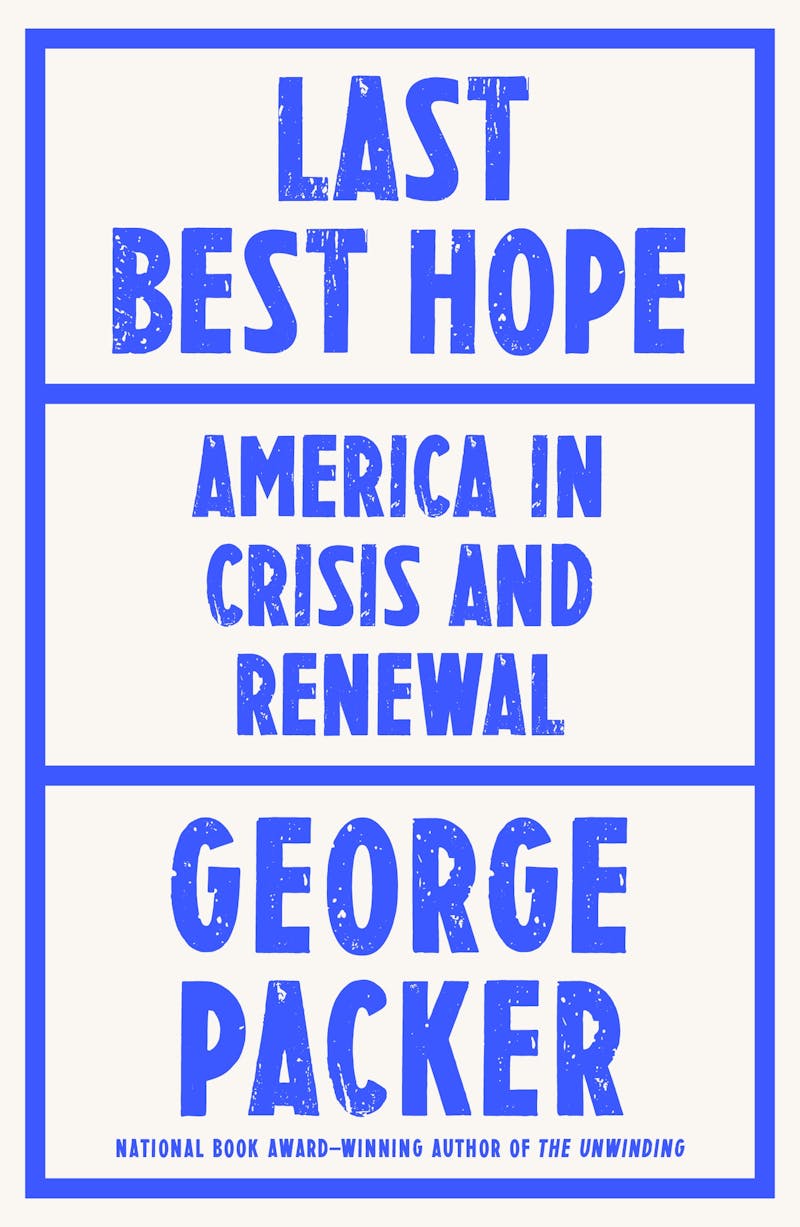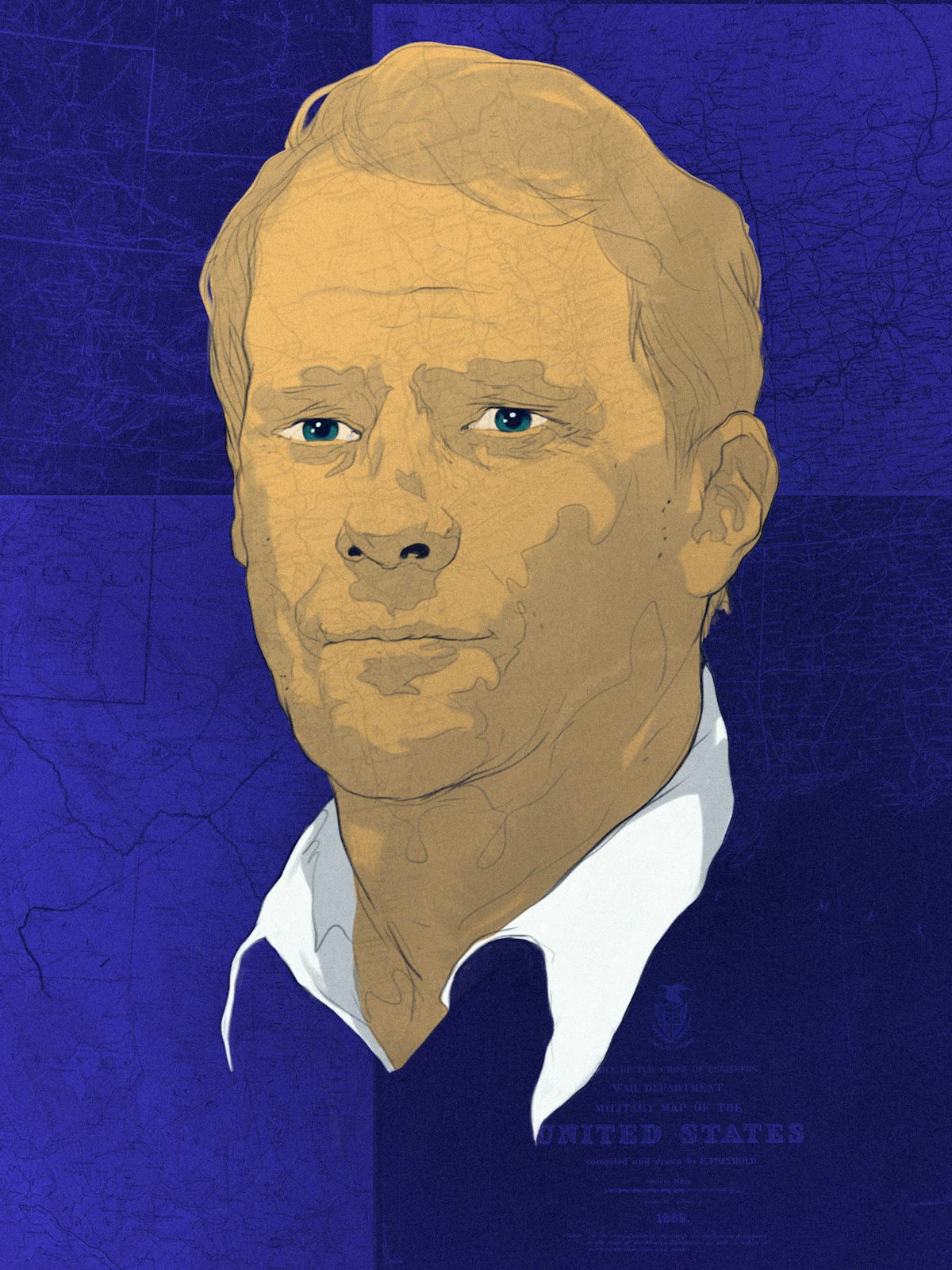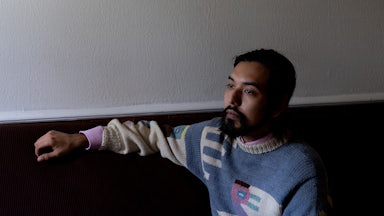In recent years, the books of liberals have shrunk in line with their aspirations. For 2019’s A Thousand Small Sanities, New Yorker staff writer Adam Gopnik took 272 pages to explain, groovily, how liberalism is “teenage texting raised to the power of law.” Last year, The Atlantic’s Anne Applebaum published Twilight of Democracy, a moving, 224-page account of the impact of two decades of creeping European authoritarianism on her dinner party circle. Now it’s the turn of George Packer, once of The New Yorker, today of The Atlantic, to have a crack at explaining what ails liberalism, and what can be done to fix it.

These three writers share an outlook, a generation—they’re all young boomers—and a word count: Like Gopnik and Applebaum before him, Packer brings Last Best Hope: America in Crisis and Renewal home at a touch over 200 pages, and for many of those pages it’s unclear whether he’ll have enough material to make it to the end. The physical thinness of these books betrays the frailty of liberal thinking in its moment of crisis: Assailed from both the left and the right, hostage to finance, and no longer able to secure the equality that grounds its central promise of individual freedom, how can liberalism reinvent itself?
Even as liberals grapple with this question, they face a complicating reality: Liberalism is not, in fact, in disarray. Indeed, in many senses it’s a thumping success. Only three decades after the fall of the Iron Curtain, neoliberalism, which preserves the classical doctrine’s package of liberties and rights while installing the market, rather than government, as the ultimate arbiter of wealth distribution, has established itself as a political state of nature throughout much of the developed world.
Liberalism is ascendant even as it is in crisis. This paradox inhibits rather than frees the liberal imagination: In the eyes of its adherents, liberalism’s success, like the success of the United States itself, means it is always the solution to its own problems. America already is great. A failure to reckon with these complications—to figure out which parts of liberalism have failed and which have worked, to sort the good from the bad—explains much of what’s wrong with the recent crop of Little Liberal Books. Neither genuinely critical nor full-throatedly prescriptive, these books are closer in spirit to catechism. A basic incoherence defines the genre. Last Best Hope is no exception.
Packer is best known for his chronicles of American hubris abroad. Books such as The Assassins’ Gate: America in Iraq and, more recently, Our Man: Richard Holbrooke and the End of the American Century portrayed a willfully parochial foreign policy establishment whose brightest stars devoted themselves to American primacy without taking the time to learn foreign languages or educate themselves about the world. In Last Best Hope, Packer takes the America-knows-best bombast that animated the Iraq debacle and the careers of State Department sluggers like Holbrooke and applies it to the country’s domestic troubles. His conceit is that America has become a failed state requiring its own liberal intervention; the object of this one-man mission is to explain “why we are divided” and “how we can become a country again.”
The orientation of this investigation is strangely solipsistic, a fact captured by the surgery that Packer has performed on the line that gives the book its title. Whereas Abraham Lincoln once declared that America was “the last best hope of earth,” Packer believes—correctly—that the United States can no longer claim to be “a light unto the nations.” In the hands of a different writer, perhaps even an earlier version of Packer himself, “last best hope” might have been repurposed ironically, as a critique of America’s projection of its own power abroad or as an injunction to learn from the rest of the world; what we get here instead is its deployment in the service of an earnest, unthinking insularity. “No one is going to save us,” Packer declares. “We are our last best hope.” The only way America can fix itself is with more America.
Last Best Hope was inspired, Packer says, by “political pamphlets from other periods of crisis.” In the best tradition of Carlyle and Swift, he spends much of the first half of the book summarizing year-old tweets. The point of this recap—which takes us through the early pandemic, the excesses of the Trump administration, and the George Floyd protests—is to allow Packer, true to liberal form, to concede problems at the margins of the body politic while emphasizing its inherent soundness. This is argument by sentimentalism, in which the chief rhetorical tools are hyperbole, the Walt Whitman quote, and the heroic-citizen set piece: America is divided but is nevertheless a country of “decent people” in which “we all want to be good neighbors” (do we?); misinformation is poisoning the public domain, but the corporate sharks responsible for building its infrastructure are “brilliant and successful entrepreneurs” (are they?); last summer’s protests revealed a breakdown in the country’s capacity to govern itself, but Packer, quoting police brutality victim Jacob Blake’s mother, believes America can be “great when we behave greatly” (what does that mean, and why does it matter?); Congress may be dysfunctional, but it’s still “the world’s greatest legislative body” (is it?). The mawkishness of these qualifications serves only to weaken Packer’s meager suggestions for a national way forward, leaving him prisoner to a stultifying historicism: Who cares whether Congress is “the world’s greatest legislative body”? Today, it’s a mess; whatever it’s been in the past is immaterial to its future.
Tiny shards of insight do emerge occasionally, but they do not pierce the book’s curtain of nationalist kitsch. Packer is not unaware of the real drivers of American dysfunction—the breakdown in elite-mass relations and a dehumanizing economic system that “makes national solidarity in a crisis impossible”—but he never seems particularly interested in probing these causes too deeply. His real interest is in description, not analysis. Where other pundits are still pushing the tired old trope of a country split in two (left-right, city-country, coast-heartland, etc.), Packer boldly asserts that there are in fact four Americas: Free America (Reaganites, free marketeers, fiscal conservatives), Smart America (Silicon Valley types, the academic elite, believers in meritocracy), Real America (Trumpists, social and religious conservatives), and Just America (Black Lives Matter, the identity politics left, anti-capitalists). The heart of Last Best Hope is devoted to describing these four categories, a Friedman-esque exercise in overexplaining the obvious, which basically boils down to the idea that radical forces are buffeting the political establishment on both the left and the right. This jaunt through the four Americas sees Packer indulge his flair for dad-style moralizing (“real freedom” means “having to grow up”) and the off-kilter character sketch: At one point, Packer informs us that Sarah Palin appealed to conservatives in part because of her “rimless glasses,” leaving readers to ponder the direction the GOP might have taken had this brave young radical not rallied the American heartland with her generational “screw you” to Big Spectacle Frame.
What this silly taxonomy makes clear is that Packer’s real beef is not with Free America, Smart America, or Real America, which are mostly treated with humanizing sympathy, but with the wokes and snowflakes of Just America. In Packer’s reading, the contemporary left, committed as it is to ideas such as “social justice” and hopelessly in thrall to the seditions of European critical theory, is the real danger to the country, since it opposes the Enlightenment values—objectivity, rationality, science, and above all the equality and freedom of the individual—on which the coherence of the republic rests. A dark portrait emerges of a country in which students are all reading Michel Foucault and Judith Butler, oppressing the steadfast citizens of Real, Free, and Smart Americas with bewildering technical vocabulary like “privilege” and “harm,” and complaining about cultural appropriation in food: With a snort, Packer notes that under the yoke of woke, “banh mi is made with grilled pork and pickled vegetables on a baguette, not pulled pork and coleslaw on ciabatta.” Silly leftists, always thinking about lunch! He seems very upset by cancel culture’s incursions into the world of the banh mi, and wants—against type, since so much of what exercises him in Last Best Hope is the modishness of academic theory—to push a kind of post-structuralism of the deli case, in which traditional sandwich names become floating signifiers to be attached to whatever combination of protein, herb, bread, and sauce the sandwich maker desires. But there does come a point where a banh mi stops being a banh mi, and quite clearly becomes something else.
When you read these words, it’s impossible to escape the feeling that Last Best Hope is in fact three books in one: a fogy’s lament about the state of the contemporary left; an appreciation of nineteenth-century observers of America like Tocqueville and Whitman, leavened with a smattering of half-baked insights into the contemporary American soul (“Road rage was invented here,” Packer bafflingly informs us toward the book’s end, making the case that automotive violence can be the glue that puts America back together); and a policy paper on measures to combat income inequality. Who exactly is this book for? Occasionally, through use of the second person, the answer slips through: Last Best Hope is for people who needed the shock of the pandemic to “realize that the miraculous price and speed of a delivery of organic microgreens from Amazon Fresh to your doorstep depends on the fact that the people who grow, sort, pack, and deliver it have to work while sick.” In other words, it’s for people like George Packer: comfortable, middle-class professionals who have come to a belated understanding of the American economy’s brutalities, but don’t want things to change so much that they lose the country that has made them a success and brings them their microgreens.
Consistent with this communion, a form of self-love marks every page. In one of his many dreary digressions on lefty conformism, Packer upbraids younger journalists for carrying “the thought police” around in their heads and asking themselves questions like: “Can I say this? Do I have a right? Is my terminology correct?” All questions that seem, to me at least, reasonable predicates to thinking and writing, but not here. George Packer’s advice to young reporters is the same as his advice to the citizens of America: Be more like George Packer. And in fairness, that’s a strategy that has worked quite well for George Packer. After all, this is a man who published his first memoir in his late twenties, and has been reaping the rewards of that self-confidence ever since. (Going to Yale may also have helped.)
Trashing the contemporary left is a way for Packer to reaffirm his liberal bona fides, committing him to the cause of cosmetic reform. There’s something else at work in these passages, however; from a deeper examination of the Packer bibliography, it seems fair to surmise that the bitterness he feels toward the left is born, at some level, of regret. In 1989, Packer, frustrated at the country’s creeping inequalities and the failures of the Democratic Party after a decade of Reaganism, joined the Democratic Socialists of America. He quit the organization a few years after Bill Clinton came to power; by the early 2000s, he was ensconced in the media redoubt of The New Yorker and supporting the American invasion of Iraq, a position he would regret when he wrote his account of the war, The Assassins’ Gate.
In his second memoir, 2000’s Blood of the Liberals, Packer told the story of that missed connection with a more radical leftism. That earlier book anticipates—and in some cases echoes almost verbatim—many of the central obsessions of Last Best Hope: America’s partisan divisions, the decline of liberalism (which “by 1989” had “become both rigidly, almost theologically abstract and hopelessly compromised”), identity politics, the roots of Reaganomics in the tumult of the 1970s, and the nihilism of a post-1960s academy for which “all the universals of the Enlightenment … burned to a crisp under the intensely magnifying stare” of Foucault’s “square metal eyeglasses.” (In the Packer cosmology, rimless glasses represent Real America, while metal frames are the soul of Perfidious France.)
What Blood of the Liberals clarifies that Last Best Hope leaves unsaid, however, is that it was some combination of ambition, self-preservation, and personal tragedy that drove Packer to abandon leftism and return to the liberal fold: ambition, because he found the DSA tedious and marginal; self-preservation and personal tragedy, because he blamed the reckless energies of 1960s radicalism for the death of his father. In 1969, Herbert Packer, a Stanford administrator struggling to keep the university’s house in order through the height of the counterculture, succumbed to a stroke; three years later, he committed suicide. “Why did it happen?” Packer asks of his father’s death in Blood of the Liberals. “Will it happen to me?”
Losing a parent in these circumstances would no doubt have been an extraordinarily difficult thing for the young Packer to deal with. But while that trauma may have helped usher him back into liberalism’s embrace in the final decade of the last century, it surely doesn’t provide a sound basis for understanding the country’s political malaise in the third decade of this one. The highly personal nature of Packer’s return to liberalism has left him with a distorted sense of America’s cultural battle lines and the power of leftists, loosely defined, to tear the republic apart.
In his latest book, we see Packer reenacting these earlier agonies, still smoldering at the social justice left, still triggered by the wounds inflicted on his cherished Enlightenment values, still spooked by the violence that activism might unleash, but aware of the inadequacy of liberal responses to a deepening crisis—and still animated, perhaps, by some long-suppressed sympathy for democratic socialism. What this means is that Last Best Hope is usually half a paragraph away from the right idea. If there’s one good (though hardly novel) thought running through these pages, it’s that the country will not remake itself without a greater measure of economic equality. But Packer wants equality without justice (too woke!), and change without hard choices. He argues that in place of protest, “we need an activism of cohesion,” which is naïve, nonsensical, and a misreading of the fundamentally confrontational nature of politics all at the same time. What would “defund the police” look like if retooled in the name of an “activism of cohesion”—“educate the police”? I believe that’s already been tried.
Despite Last Best Hope’s billing as a political book, politics, it turns out, is the one thing Packer is most afraid of, which frequently leads him down the path of self-contradiction. He criticizes BLM and the anti-racism movement for producing a purely “gestural politics” less interested in “social reform than a revolution in consciousness,” but his whole notion of government, which he insists on calling “self-government,” is strictly individualized and psychological. Government is not, in this view, a dynamic relationship between governors and the governed; it’s a series of “habits of thinking and acting” that “starts in ourselves.” Be best. The revolution will be decaffeinated; on with their heads.
Toward the end of Last Best Hope, Packer tosses off a hurried list of policy ideas to help put the country back together again: universal health care, an expanded social safety net, an increase in the estate tax, reinvigorated anti-monopoly legislation, and so on. What’s surprising about this list is not that it’s bad—on the contrary, all these ideas are good—but how squarely it sits in the consensus of liberal thinking today, and how meek it is, how soft a foundation it sets for the reconstruction of the country. In this list, there is nothing about institutional reform (Packer barely mentions anachronisms such as the Senate or the Supreme Court), nothing about finance or the financialization of everyday life, nothing to challenge the subordination of the public to the private, nothing about the civilizational catastrophe of climate change or the urgent need for global (and therefore national) decarbonization.
In an era crying out for radical thinking, Packer offers the damp squib of incrementalism. He wants to “make America again.” His doctrine is MAGA without the G, or MAA. The real failure here is a failure of imagination. Packer says that rebuilding America means coming up with “a better story.” And he’s right, though a better story should involve more than simply saying: “You’re drowning in debt, the planet is cooked, and your job still sucks, but Facebook has been broken up and now you have public health care.” A younger Packer might have found the solution in democratic socialism, but that idealist is long gone, and the doctrine embraced by his replacement is still, despite recent ravages, wearily triumphant. If liberalism is to remain America’s guiding political star, it needs a better vision—anchored in creativity, care, ecology, whatever it might be—of how individual freedom and the common good can knit together. That vision is not the one found here.




